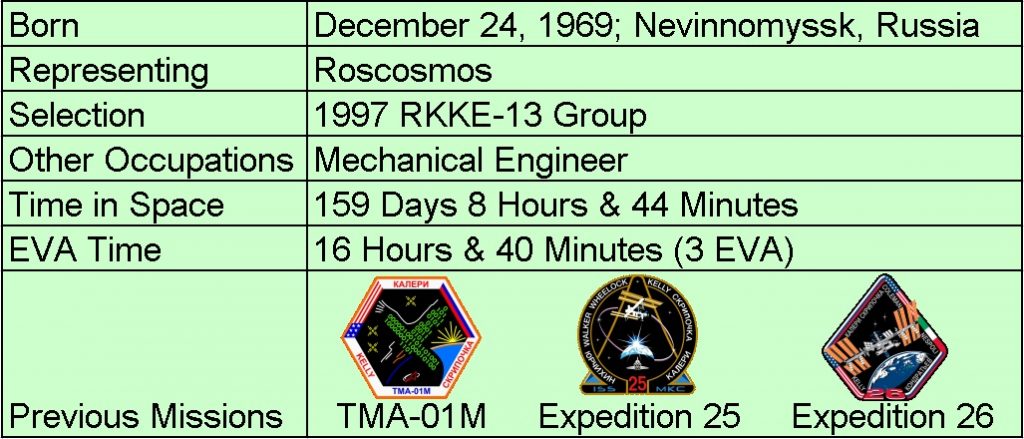Oleg Skripochka
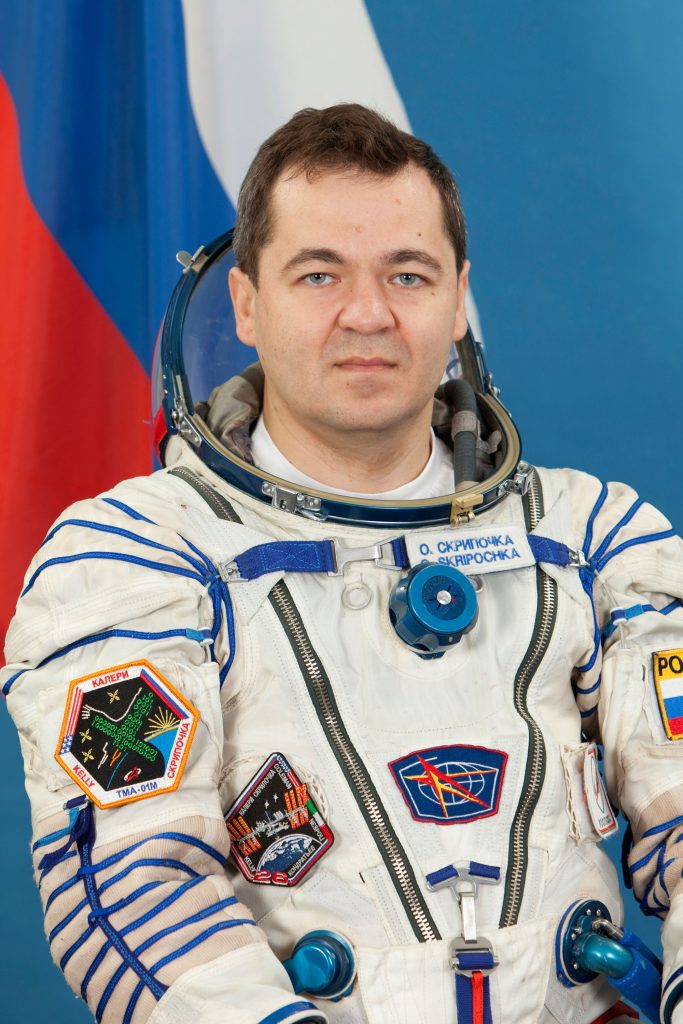
Oleg Ivanovich Skripochka, born December 24, 1969 in Nevinnomyssk, Russia is a Pilot Cosmonaut with a background in mechanical engineering. He returns to ISS in 2016 as part of Expedition 47/48 after having completed a long-duration flight in 2011 for Expeditions 25 and 26 during which he also performed three spacewalks.
Upon graduating from high school in 1987 with a specialty in physics and mathematics, Skripochka entered Bauman Moscow State Technical University, receiving a diploma in mechanical engineering with a specialty in Rocket Construction in 1993.
While enrolled at university, he worked as a test-metal worker from ’87 to ’91 and a technican until 1993 within the technical bureau at rocket and spacecraft manufacturer Energia. After graduating, he continued to work at Energia as an engineer tasked with the development ground support systems for transport and cargo spacecraft as well as upper stages.
Oleg Skripochka was selected as a Cosmonaut candidate in mid 1997 and reported to the Gagarin Cosmonaut Training Center in January 1998 to begin a two-year training and evaluation program. He passed all tests and received his qualification as a Test Cosmonaut in December 1999 as part of Energia’s Cosmonaut Detachment. Beginning in February of 2000, Skripochka completed general training under the International Space Station Program.
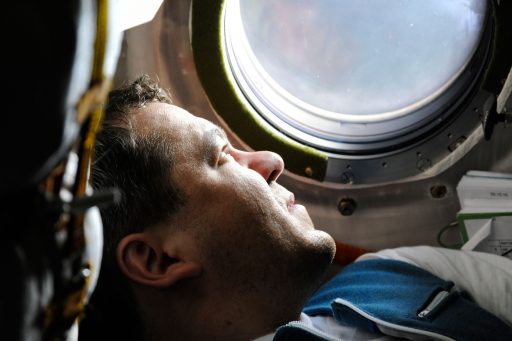
He was assigned to the backup crew of the sixth ISS Visiting Crew, a mission that was canceled after the Columbia accident due to re-structuring of ISS crew transfer missions.In 2006, he was first assigned to the Expedition 19 backup crew before transitioning to the backup crew of ISS-17.
Skripochka participated in emergency water landing training in June 2006 with Cosmonauts Yuri Lonchakov and Oleg Artemyev. He was also on the list for a backup slot for Expedition 21, an assignment that was never confirmed before receiving a prime crew spot for Expedition 25/26 in July 2008 – starting two years of flight specific training with crew members Aleksandr Kaleri and NASA Astronaut Scott Kelly. The crew was the first to train for flight aboard the modernized Soyuz TMA-M variant that features an improved digital flight control system and more capable flight computers along with other weight reduction measures.
In April 2010, the crew served as backups to the Soyuz TMA-18 crew heading to the International Space Station, afterwards being upgraded to prime crew members for their long-duration mission to the orbiting outpost.
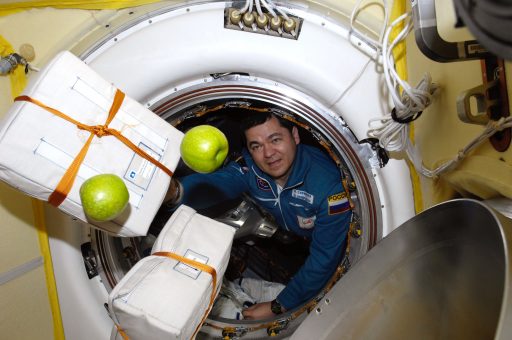
Soyuz TMA-01M blasted off atop a Soyuz FG rocket on October 7, 2010 and enjoyed a flawless trip into orbit, beginning a 34-orbit rendezvous with the Space Station. The spacecraft conducted a fully automatic rendezvous with ISS, culminating in a successful docking to the Poisk Module at 0:01 UTC on October 10.
The three Soyuz crew members joined the Expedition 25 crew of Doug Wheelock, Shannon Walker and Fyodor Yurchikhin. Gearing up for seven weeks of joint operations, the crew was focused on performing over 150 active experiments aboard ISS and conducting regular maintenance on the various ISS systems.
On October 25, Progress M-05M made room for the next Progress resupply craft, M-08M, that launched two days later from Baikonur and arrived in the vicinity of ISS another two days later. When stationkeeping at 194 meters, the Progress was switched to TORU mode after a problem with its automatic rendezvous system was detected. Working inside the Service Module of ISS, Aleksandr Kaleri manually brought the craft in for a docking to the Pirs Module to mark the arrival of 2,300 Kilograms of cargo at ISS.
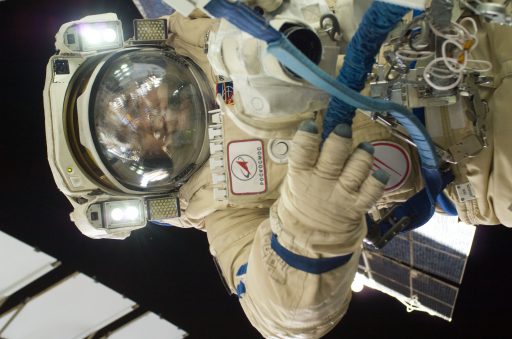
Stepping outside on November 15, Yurchikhin and Skripochka conducted a 6-hour 27-minute spacewalk to install a multipurpose workstation on the Zvezda module, put in place struts between the Poisk and Zvezda modules, retrieve a number of external experiment payloads and install new ones on the exterior of the Russian ISS Segment.
After the EVA, the crew focused on the departure of Soyuz TMA-19 that made a successful landing on November 26, 2010. Kelly, Kaleri and Skripochka worked as a crew of three for the first two weeks of Expedition 26 until they were joined by Dimitri Kondratyev, Cady Coleman and Paolo Nespoli, brought to ISS by the Soyuz TMA-20 spacecraft on November 26.
In the closing weeks of 2010, the crew was purely focused on science operations and also got a chance to take a few days off over the holidays. On January 21, 2011, Skripochka and Kondratyev performed a 5-hour 23-minute EVA that was dedicated to the installation of the Radio Technical System for Information Transfer to demonstrate high-data rate communications to ground stations. During the EVA, the team also removed the plasma pulse generator from Zvezda, the Expose-R experiment and the crew also relocated a camera on the Rassvet module.
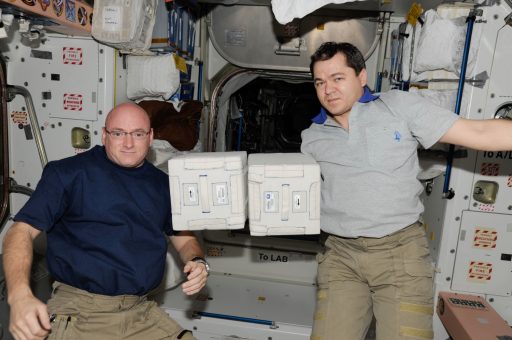 The two spacewalkers ventured outside again on February 16, installing a radio antenna, deploying a nano satellite, installing two experiment payloads and retrieving two exposure payloads. This third EVA brough Skripochka’s total EVA time to 16 hours and 40 minutes.
The two spacewalkers ventured outside again on February 16, installing a radio antenna, deploying a nano satellite, installing two experiment payloads and retrieving two exposure payloads. This third EVA brough Skripochka’s total EVA time to 16 hours and 40 minutes.
In January and February, ISS was visited by three spacecraft, Progress M-09M arrived at Pirs on January 30 delivering 2,666kg of supplies, ATV-2 docked to Zvezda on February 24 carrying 7,084kg of cargo, and Space Shuttle Discovery docked to PMA-2 on February 26 with a crew of six. Discovery delivered the Permanent Multipurpose Module stuffed with tons of equipment, the ExPRESS Logistics Carrier 4, Robonaut and different internal payloads. The mission featured two EVAs to outfit the exterior of the various USOS modules.
Soyuz TMA-01M departed ISS on March 16, 2011, headed for a short free flight ahead of its deorbit burn and re-entry into the atmosphere. The spacecraft landed in a snowy Kazakh steppe, concluding a mission of 159 days, 8 hours and 43 minutes.
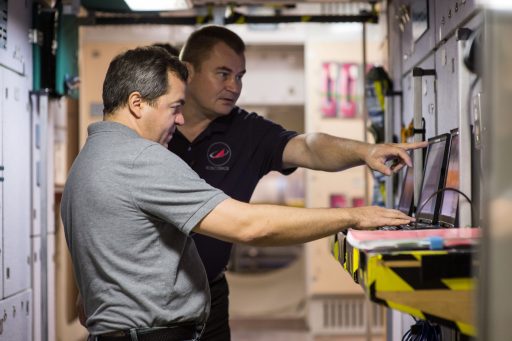
Coming back after his first flight to space, Skripochka transitioned to the Cosmonaut Corps of the Gagarin Cosmonaut Training Center, re-starting general ISS training. His second flight assignment was confirmed in January 2014 as a prime crew member of ISS Expedition 47/48 and backup of Sergei Volkov on Soyuz TMA-18M / Expedition 45/46. The 47/48 crew completed emergency landing training in winter conditions later that month for the unlikely event of a Soyuz landing in remote terrain.
As part of his backup assignment, Skripochka, together with Thomas Pesquet and Sergei Prokopiev completed Soyuz TMA-M and ISS Russian Segment training in August 2015 before traveling to the Baikonur Cosmodrome for the launch of Soyuz TMA-18M in September.
For his second long-duration mission, Oleg Skripochka will serve as Flight Engineer on the Soyuz TMA-20M spacecraft and Flight Engineer for ISS Expeditions 47 and 48.
Oleg Skripochka is married to Elena Vladimirovna Milovanova, they have a daughter born in 2005 and a son born in 2008. His hobbies include parachute jumping and cycling.

